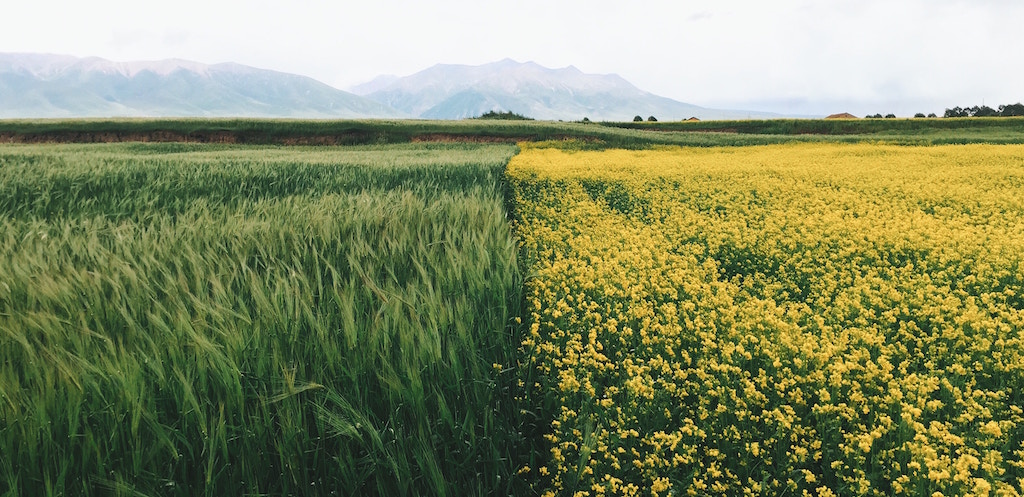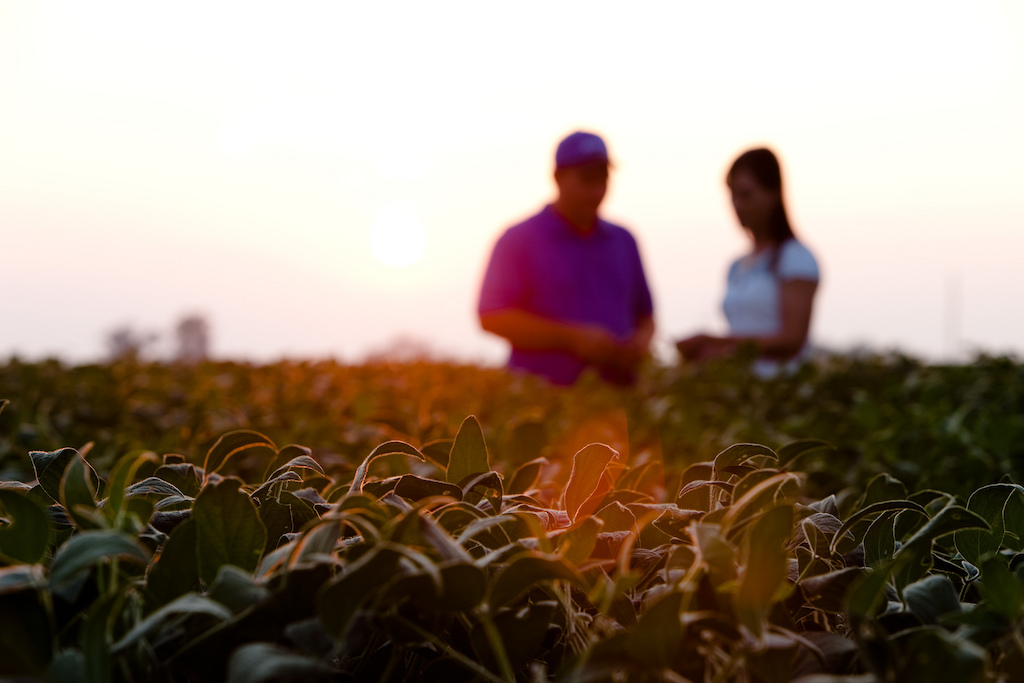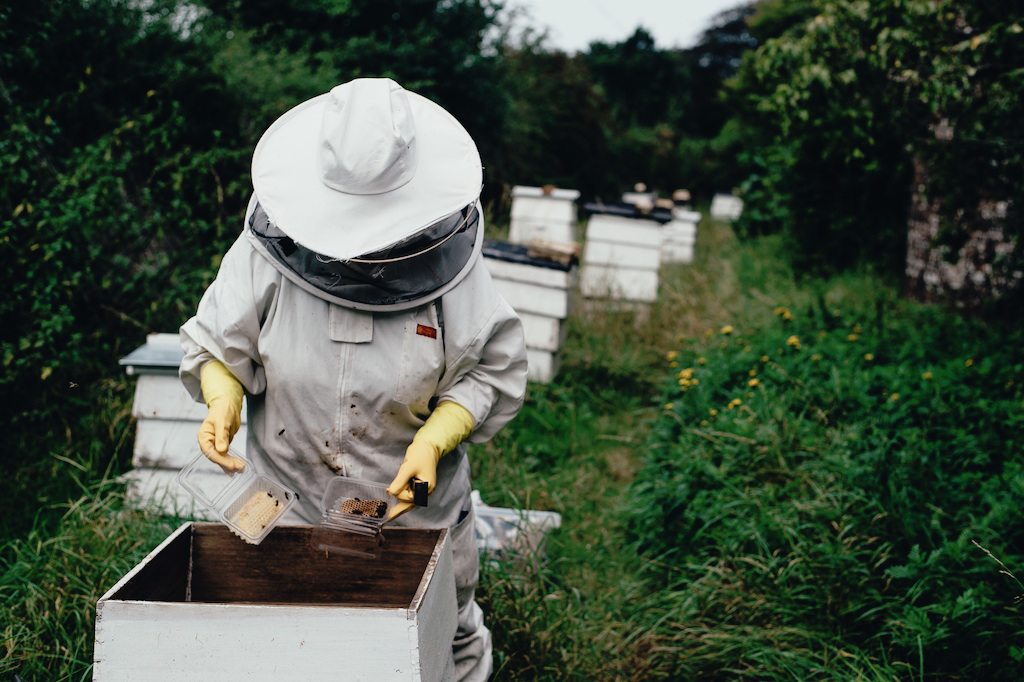
Hillary Bonhomme
Editor’s note: We got a tremendous number of reader responses to this op-ed. You have questions. Our writers want to answer them. So on Wednesday, March 28 at 4 PM, we’re hosting our first live #farmchat on Twitter. Ask us your burning questions about young farmers and the future of farming right here, and our writers will respond in real time.
On the day after Thanksgiving of 2017, the Washington Post ran a front-page story on the “growing number of young Americans … leaving desk jobs to farm.” It profiled Liz Whitehurst, a liberal-arts graduate in her early 30s who left the nonprofit sector for a farm where she grows “certified peppers, cabbages, tomatoes, and salad greens from baby kale to arugula.” The Post argued she is part of a “movement” of young growers committed to sustainable practices, organic foods, and local markets. Kathleen Merrigan, director of the Sustainability Collaborative at George Washington University and the face of progressive food reform at the United States Department of Agriculture (USDA) under the last administration, told the Post that farmers like Whitehurst signal a “sea change in American agriculture.”
The average young farmer is less like Whitehurst and more like Chris Soules, the former contestant from ABC’s long running reality-TV show, The Bachelor, whose family’s Iowa farmland is worth around $35 million (Soules made news for another reason last year, after he was involved in a fatal crash that killed a rural northeast Iowa farmer.)
Soules has received almost $700,000 in farm subsidies from the government since he started farming in 2001. His case is typical: policymakers send the vast majority of agricultural subsidies to large-scale farmers, almost all of whom are white men. As long as agricultural policy favors wealthy, large-scale producers like Soules, then full-time farming will remain the preserve of a fortunate few.
 ABC
ABC The average young farmer is more like Chris Soules, the former contestant from ABC’s long running reality-TV show, The Bachelor, whose family’s Iowa farmland is worth around $35 million
But unlike Whitehurst and other young people committed to sustainable practices, Soules operates an industrial farm in Iowa where he mass produces commodity crops and raises hogs in a concentrated animal feeding operation (CAFO). Soules is also part of a generation of farmers that skews slightly more white and male than any older one now farming. The most recent Census of Agriculture, a nationally representative survey conducted by USDA in 2012, reports that farmers under age 35 (as Soules was at the time) are 94 percent non-Hispanic white and 90 percent male, while each older group is less white and male than the youngest cohort of farmers. Farmers over the age of 75 are the least white by a slim margin, even though that so-called “Silent Generation” is only 22 percent nonwhite. By contrast, milliennials as a whole are almost 44 percent nonwhite, which makes the whiteness of millennial farmers all the more striking.
 Nathan Rosenberg
Nathan Rosenberg Share of nonwhite and female farmers by age group, 2012
Not only are farmers in Soules’ generation very white and very male, they also appear to be more likely to practice conventional, industrialized agriculture than older farmers. According to another data set from the 2012 Census of Agriculture, farmers under age 35, though they have not had much time to acquire land and capital, are just as likely as farmers over age 35 to operate mid- and large-scale farms. They also appear to rely on commodity crops to a much greater extent than older farmers. The most common commodity crops, which include corn, soy, wheat and oilseeds, account for 40 percent of total sales for young farmers—7 percentage points higher than the share for farmers 35 and older (These totals also include sales of dry beans and peas, although they account for less than one percent of sales.) While some of these producers may be using sustainable practices, only about 1 percent of all young farmers operate organic farms.
 Nathan Rosenberg
Nathan Rosenberg Common commodity crops as share of sales by age group, 2012
Part of the reason the Post’s assertions on these matters are so at odds with the data is that the survey it relies on for many of its claims is, in the sponsoring organization’s own words, “not randomly selected nor statistically modeled to represent all young farmers.” The National Young Farmers Coalition (NYFC), a progressive organization, distributed the survey online and to coalition members and young farmers connected with 94 other organizations that work with or represent farmers. With few exceptions, the participating organizations work to build local or sustainable food systems. As a result, the survey was heavily skewed toward the “highly educated, ex-urban, first-time farmers” the Post purports to show are the future of farming. Just as we would expect a survey of College Republicans to report favorable views of Donald Trump among young people, so, too, would we expect a survey of farmers in local and sustainable food networks to report high rates of sustainable and local production among young farmers.
The data bear this out. The coalition’s survey found that 38 percent of young farmers, defined as farmers under age 40, sell flowers, compared to the agricultural census—a nationally representative survey—which found that only 3 percent sold “nursery, floriculture, or greenhouse crops.” Similarly, the coalition found that 72 percent of young farmers sold vegetables, while the census found only 5 percent.
Here’s why: After USDA took over the agricultural census from the Census Bureau in 1997, the department steadily improved the survey’s historic undercounts of small-scale, minority, women, and young farmers. The agency implemented outreach programs and methodological changes to make its estimates more accurate. As the undercounts diminished, reported numbers increased, but changes in the methodology make meaningful comparisons with previous years difficult.
An instructive example comes from the 2012 census. The department implemented a new estimation procedure that year, which included an adjustment for farms that had previously been mistakenly identified as non-farms. That adjustment alone added 10,900 young farmers, far greater than the total increase of 1,200 young farmers between 2007 and 2012. Since the department used different methods of estimation in earlier years, it is hard to say whether this new adjustment captured something missed by previous surveys. But, consider that, despite an extensive two-year outreach program, the number of young farmers actually contacted by USDA fell by 3,600 in 2012, while the number added in the adjustment phase increased by 4,800—this at a time when USDA claimed, unambiguously, there were more young farmers as a result of the agency’s efforts.
 Nathan Rosenberg
Nathan Rosenberg Raw and adjusted counts of young farmers in the 2002, 2007, and 2012 censuses
Most of our criticisms above apply to any of the many articles on the “rise” of female or minority farmers that the national media has printed over the past several years. The New York Times alone has run separate stories on female, Hispanic, and young farmers, each suggesting these groups are making significant strides, all subject to the critique leveled against the Post.
NPR, Fox News, the Los Angeles Times, and other national outlets have also run stories suggesting various groups of young and historically marginalized farmers are doing quite well, often in inspiring, relatable terms. Young farmers, the Times tells us, often “shun industrial mechanized farming and list punk rock, Karl Marx, and food journalist Michael Pollan as their influences.”
Many articles on minority, female, and young farmers—including reporting on Kimbal Musk’s shipping container-based Brooklyn accelerator that is teaching millennials how to farm—rely on misleading interpretations of survey data and optimistic narratives that do not reflect reality
Why do journalists keep relying on these sorts of narratives? For one, the Department of Agriculture has not always been forthright about how to interpret its survey results. The agricultural census has changed so much that direct comparisons between recent censuses will often be misleading. Yet USDA officials have repeatedly made these comparisons in reports and public statements without proper qualification—veering far from established norms in the profession. By contrast, the website for the American Community Survey, a widely cited federal survey, contains numerous, detailed explanations on statistical significance and how to make meaningful comparisons over time. While journalists should be skeptical of claims made by federal agencies, the government has at least as much responsibility to be transparent. Indeed, USDA has often seemed more interested in managing its image than being straightforward with the public.
One of USDA’s more successful public relations campaigns dealt with women farmers. When she was deputy secretary of agriculture, Kathleen Merrigan—the George Washington professor who told the Post about a “sea change” in young farmers, and who also consulted on the NYFC survey—claimed that the number of female farmers “more than doubled” between 1982 and 2007.
Nevertheless, USA Today declared that women were “breaking the ‘grass ceiling’” and the New York Times, the Washington Post, NPR, and other publications ran similar stories that uncritically repeated USDA’s claim that the number of female farmers had risen dramatically.
The department’s public relations efforts have been helped by an apparently common belief among many college-educated readers that a diverse set of young people, inspired by the food movement and increased media coverage of agriculture, have entered farming in droves. Many young college graduates have friends who worked on farms during summers or after college, and many city residents have seen diverse groups of people selling goods at their local farmers’ market, even though it is white farmers who receive 96 percent of all revenues from agricultural goods sold directly to consumers. Out of the $1.3 billion worth of agricultural products sold directly to consumers in 2012 according to the Census of Agriculture, white farmers sold more than $1.25 billion.
But the truth is that Americans have almost no chance of becoming full-time farmers unless they are born into a wealthy, land-owning family. Oscar Ameringer, an agrarian populist in early 20th century Oklahoma, divided farmers into two types: “the farmer who farms the farm” and “the farmer who farms the farmer,” that is, those who used their own physical labor and those who were “exploiters of labor.” The latter, he wrote, reflected a troubling and increasing “separation between ownership and labor” in agriculture. While many American farmers still farm the farm, few of them are able to earn a livable income from it. These more modest operations are rapidly losing land to farmers who farm the farmer, or as Ameringer might put it today, farm the farmworkers—who are paid low wages to do the work for them.
We may want a food system where farming full-time is an obtainable ambition for young people, regardless of their race, gender, or wealth, but that will require more than a renewed interest in agriculture or tax credits for beginning farmers: it would necessitate a radical break with contemporary agricultural policy. Commercial farmers, who are 97 percent white and 98 percent male, were expected to net an average of $364,000 in income in 2017. They also take in the overwhelming bulk of government payments: the largest 10 percent of farms receive almost 80 percent of farm subsidies. Unless that changes, full-time farming will be for those who are born into it, those who can buy their way into it, and almost no one else.












